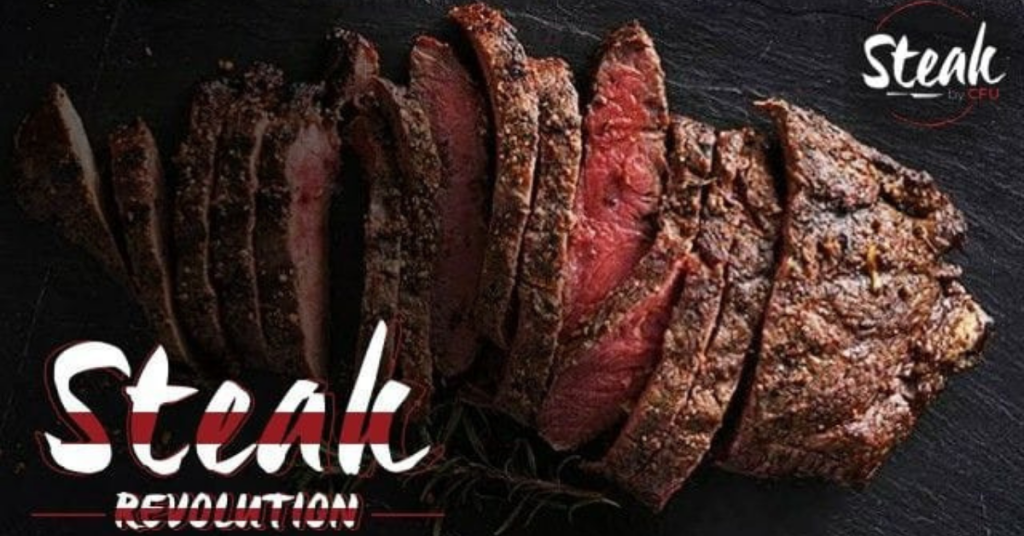Ever wondered if that juicy, Steak By Cfu raw steak sitting in your fridge is safe to eat? Well, you’re not alone. Did you know that foodborne illnesses affect 1 in 6 Americans each year? Yikes! But don’t worry, we’ve got your back. Today, we’re diving deep into the world of raw steak safety and demystifying those confusing CFU counts.
Whether you’re a passionate home cook or just someone who loves a good steak, this guide will arm you with the knowledge to make safe, informed decisions about your meat. So, let’s get ready to become raw steak safety experts and keep those nasty bacteria at bay!
What the heck is CFU, and why should I care?

Alright, let’s start with the basics. CFU stands for Colony Forming Units, and it’s a way to measure the number of viable bacteria in a sample. When it comes to raw steak, CFU counts can tell you a lot about its safety and quality. Think of it as a bacterial report card for your meat!
But here’s the kicker: not all bacteria are created equal. Some are harmless, while others can turn your dream dinner into a nightmare. The key is knowing how to interpret these numbers and what they mean for your health.
Related: Flux Core Welding Problems:#Ultimate Self-Shielding FCAW Troubleshooting Guide
The CFU Danger Zone: When Numbers Get Scary
So, what’s a good CFU count for raw steak? Well, according to food safety experts, anything under 100,000 CFU per gram is generally considered acceptable. But hold on to your hats, because here’s where it gets wild:
- 100,000 – 1,000,000 CFU/g: Proceed with caution
- 1,000,000 – 10,000,000 CFU/g: Houston, we have a problem
- Over 10,000,000 CFU/g: Danger, Will Robinson!
Remember, these are just guidelines. Factors like the type of bacteria present can make a big difference. But as a rule of thumb, lower is always better when it comes to CFU counts.
The Bacterial Usual Suspects: Meet Your Meat’s Unwanted Guests
Now, let’s talk about the bad guys. When it comes to Steak By Cfu, there are a few bacterial culprits you need to watch out for:
E. coli:
The infamous troublemaker
Salmonella:
The sneaky invader
Listeria:
The cold-loving menace
These bacteria can cause everything from mild discomfort to severe illness. The CDC estimates that these pathogens contribute to 48 million illnesses, 128,000 hospitalizations, and 3,000 deaths in the U.S. each year. Scary stuff, right?

From Farm to Table: The Journey of Your Steak By Cfu Count
Ever wondered how your Steak By Cfu picks up these bacterial hitchhikers? Well, it’s a long journey from the farm to your plate, and there are plenty of opportunities for contamination along the way. Here’s a quick breakdown:
At the farm:
Animal health and living conditions play a big role
During slaughter and processing:
Sanitation is key
Transportation and storage:
Temperature control is crucial
At the store:
Proper handling and storage of matter
In your kitchen:
Your practices can make or break food safety
Each step can impact the CFU count of your steak. That’s why it’s so important to buy from reputable sources and practice good food safety at home.
The Home Cook’s Arsenal: 5 Powerful Ways to Keep Steak By Cfu Counts Low
Now that we know the enemy, let’s talk strategy. Here are five foolproof ways to keep those CFU counts in check:
1. Chill out:
Keep your fridge at or below 40°F (4°C)
2. Separate and conquer:
Use separate cutting boards for meat and veggies
3. Clean machine:
Wash your hands and utensils thoroughly
4. Time is of the essence:
Cook or freeze meat within 2 days of purchase
5. When in doubt, throw it out:
Trust your senses – if it smells off, it probably is
By following these tips, you can significantly reduce the risk of bacterial growth and keep your steaks safe and delicious.
The Great Debate: To Wash or Not to Wash?
Here’s a controversial topic that might surprise you: washing your steak before cooking is a big no-no! I know, I know, it sounds counterintuitive. But hear me out.
Washing raw meat can spread bacteria around your kitchen, increasing the risk of cross-contamination. The USDA strongly advises against this practice. Instead, cooking your steak to the proper temperature is the best way to eliminate harmful bacteria.
The Future of Food Safety: Technology to the Rescue
As we wrap up our journey into the world of CFU counts and raw steak safety, let’s take a quick peek into the future. Exciting new technologies are emerging that could revolutionize how we monitor and ensure food safety:
- Rapid testing methods that can detect pathogens in minutes
- Smart packaging that changes color when meat spoils
- Blockchain technology to improve traceability in the food supply chain
These innovations could make interpreting CFU counts easier than ever, giving us even more power to keep our meals safe and delicious.
Frequently Asked Questions
1. What does CFU mean about steak?
CFU stands for Colony-Forming Units and refers to the number of viable bacteria or fungal cells in food, like steak, that can multiply to form colonies. It is used to assess the microbial quality of food and determine its safety for consumption.
2. How is CFU measured on steak?
CFU is measured by taking a small sample of the steak and placing it in a nutrient-rich environment. This allows bacteria to grow, and the number of colonies formed represents the CFU count. It helps evaluate the level of contamination or spoilage.
3. What is a safe CFU count for steak?
The Steak By CFU depends on food safety regulations, but typically, steak should have a low CFU count. High CFU levels can indicate bacterial contamination, which could lead to foodborne illnesses. Fresh steak should have minimal CFU.
4. How does CFU affect the shelf life of steak?
The higher the CFU count, the shorter the shelf life. As bacterial levels rise, the steak may start to spoil faster, impacting its quality and safety. Proper storage, like refrigeration, can slow down bacterial growth and keep CFU levels low.
5. What factors increase the Steak By Cfu?
Several factors can increase Steak By Cfu:
- Poor handling or sanitation
- Exposure to air and moisture
- Lack of proper refrigeration
- Cross-contamination during processing or packaging
Conclusion
And there you have it, folks! You’re now armed with the knowledge to interpret CFU counts like a pro and keep your Steak By Cfu safe and scrumptious. Remember, while CFU counts are important, they’re just one piece of the food safety puzzle. Always use your senses, follow good hygiene practices, and when in doubt, err on the side of caution.
So, the next time you’re eyeing that beautiful raw steak, you’ll know exactly what to look for and how to handle it safely. Now go forth and grill with confidence, knowing you’ve got the power to keep those pesky bacteria at bay. Happy cooking, and may your steaks always be safe and delicious!
Joining a WhatsApp group link can connect you with like-minded people. It’s easy and opens doors to new conversations. Share and receive information quickly. Stay updated with group activities. Respect group rules to maintain harmony. Enjoy the benefits of being in a WhatsApp group.

